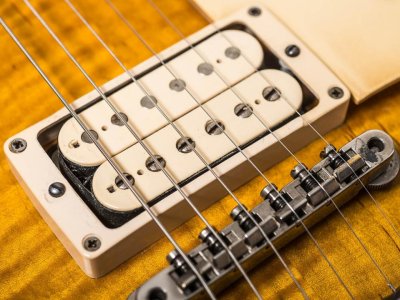Using 9-42. Old hands can't handle any more than that. I do have a set of 10s sitting right here, I could try those as an experiment, and if it fixes I'll post here - but I'll give up and go back to 9s.
Edit: the nut for this guitar was cut for 9-42.
I tried using two different cables, as I normally use a Line6 wireless, no help.
Humbuckers do interfere, just not nearly as much as single coils (hence the term Stratitis.).
I had my first run through with the keyboard player for this project - at volume with keys and a click, the fizzing out was not noticeable. I am going to try the magnet swap and the 10s as an experiment. I also want to try the add-weight-to-the-headstock trick - mentioned above and I've heard that before for light SGs.
A couple of guys mentioned "dead spot" - does that mean "defective" spot in the wood along the neck? Any fix? I know much about electronics, but nothing about wood...
Thanks again!
Maybe you could try .095s as a compromise. I'm in the process of stepping down from the .010s I've used for decades.
.095s are definitely easier on the hands than .010s but not as plinky as .009s, which (for me) demand a gentler picking approach.
I'm glad your guitar's issue was not as obvious when playing with keys.
A lot of factors tend to be far less evident in context than they are when playing alone.
That's true not just of minor playability issues, but also nuances of tone that we might obsess over.
Sometimes details get masked by other instruments, but of course volume alone works wonders for sustain.
Some problems disappear completely once a guitar begins to come alive at stage levels.
Concentration, enthusiasm and adrenaline tend to divert our attention somewhat too.
~
When we talk about a dead spot (one that doesn't involve fretting out), it generally means a note that dies out more quickly in one position than when it's played elsewhere on the fretboard. This is due mostly to the geometry of certain designs yet also partly to the pieces of wood which make up an individual instrument - especially the neck. While a certain model (SGs and Strats for example) may have a predisposition towards a dead note in a certain spot, it can be more of a problem on some guitars than others even among the same model.
Where a guitar has had a significant problem with this, some have used added weight at the headstock or tuning alterations to address it.
These tweaks rarely eliminate the problem completely, but they often can shift the frequency of such an issue to a less important note.

